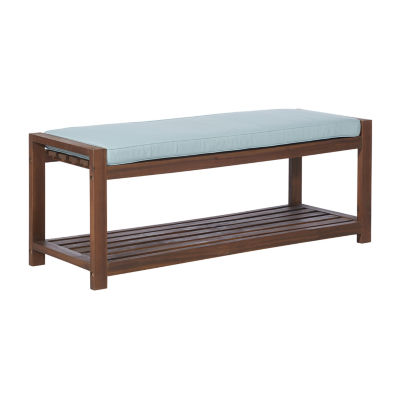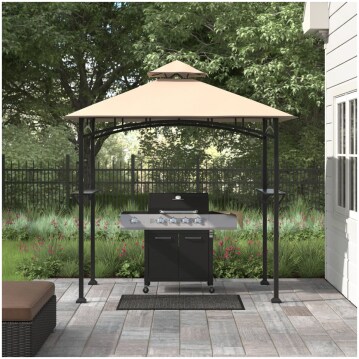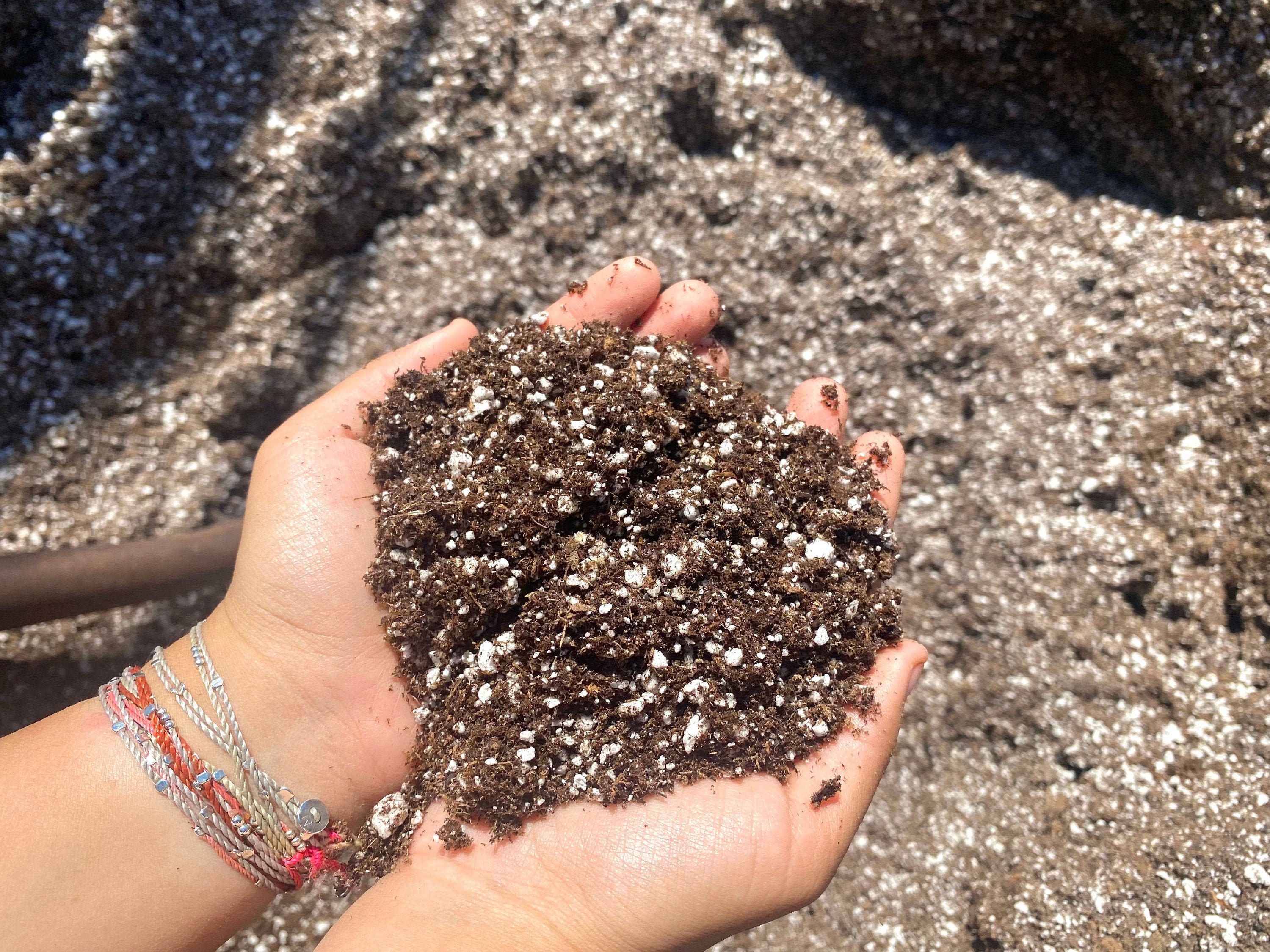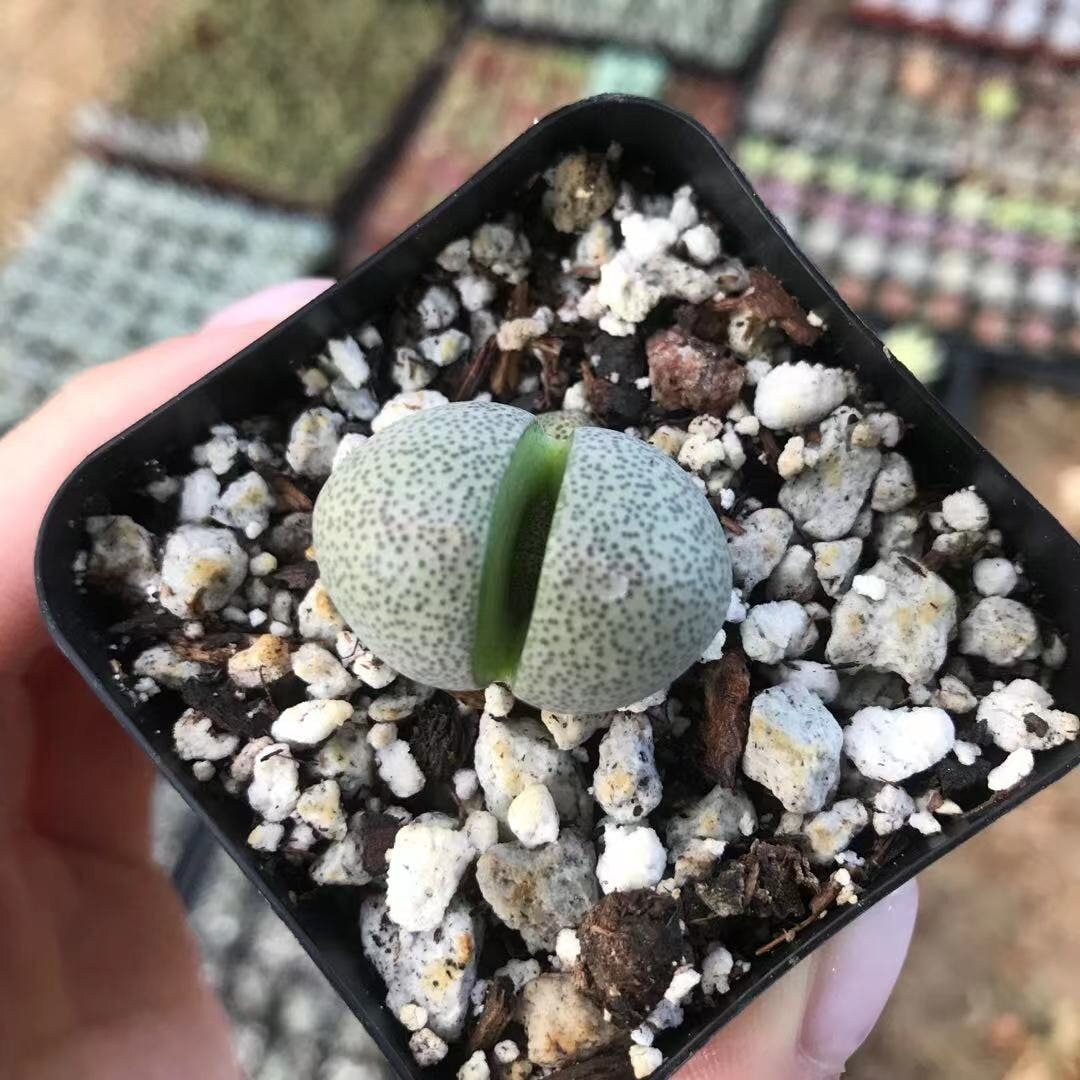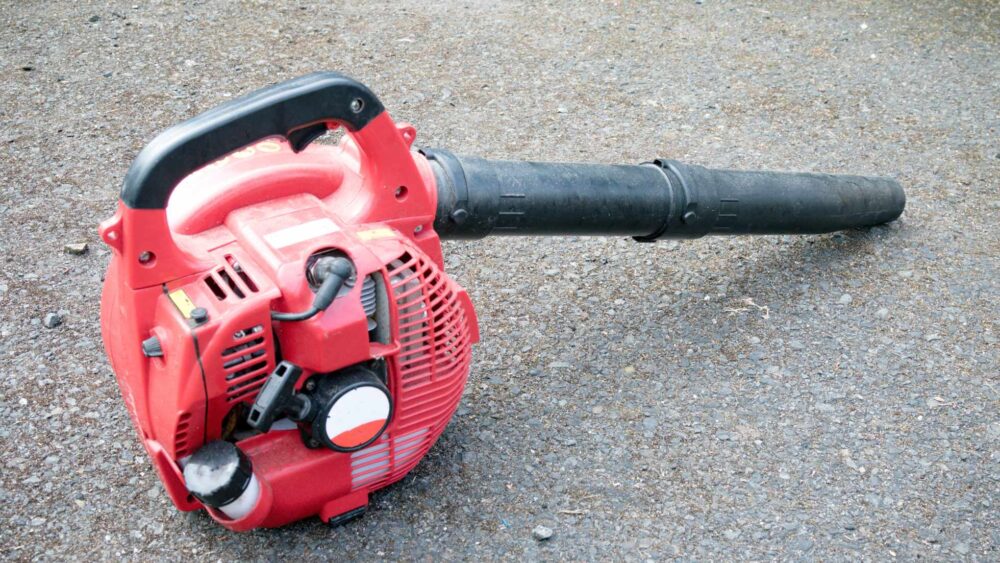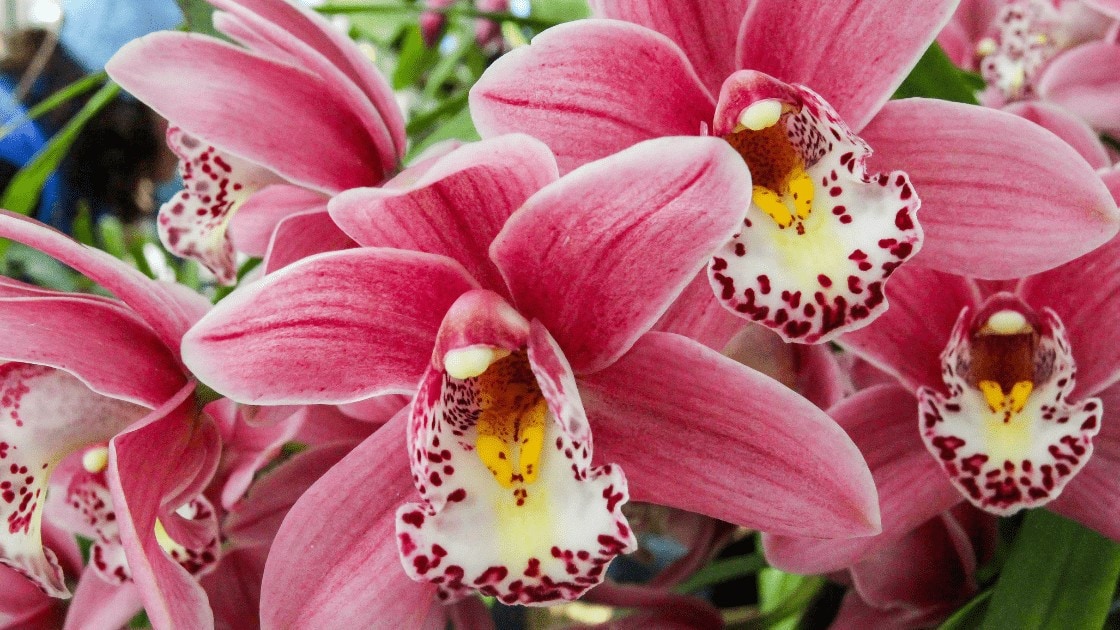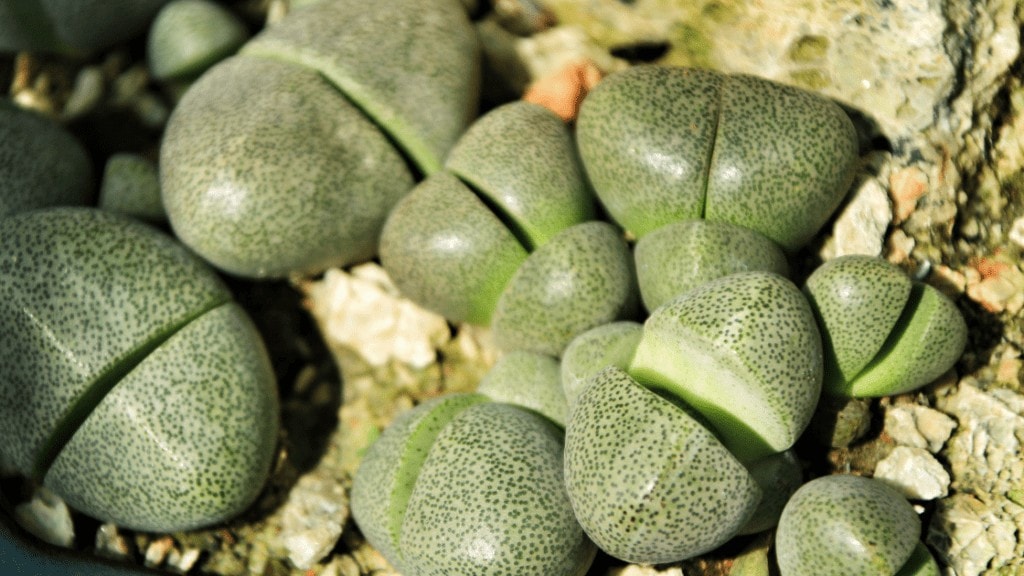
Pleiospilos Nelii is a perennial succulent with a very interesting shape – it disguises itself as a plain-looking rock in order to protect itself from herbivores. It’s in the same family as the popular Lithops succulents (Aizoaceae), but is larger, reaching up to 4 inches in diameter.
Although this succulent grows very slowly, it’s easy to take care of and only requires strong sunlight and infrequent watering. In this article, we’ll go into more detail on how to care for the Royal Flush succulent, how to provide it with its needed winter dormancy and will go over all of its other growth requirements. Let’s get started!
Pleiospilos Nelii cv. ‘Royal Flush’ – Description and Common Names
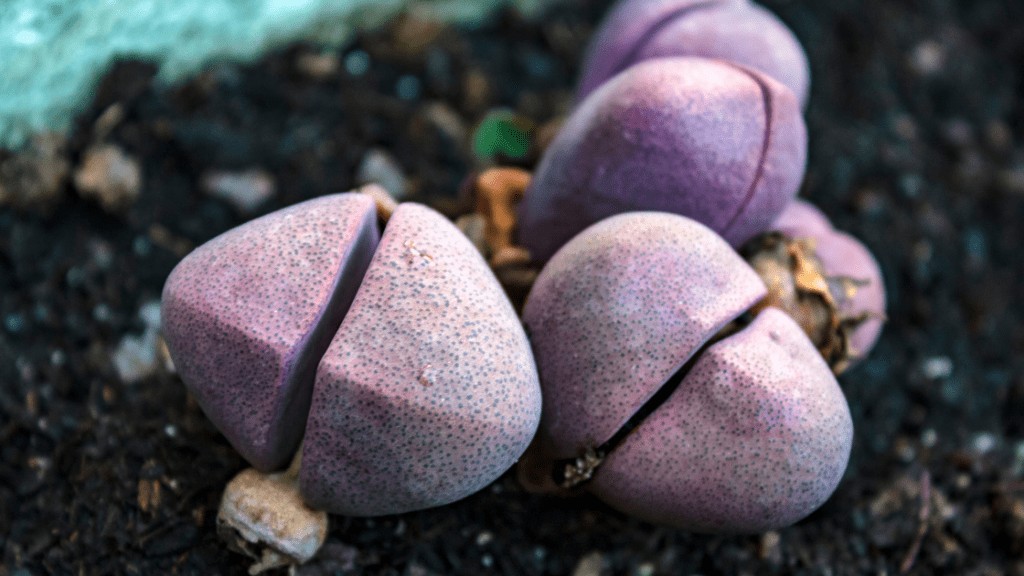
The basic cultivar of Pleiospilos Nelii has a green body with a rough texture and dark spots. In strong sunlight, the base of this perennial succulent sometimes takes on a red-purple tinge and through artificial selection, the ‘Royal Flush’ cultivar has been created, which has fully purple-colored leaves.
Browse our Affiliate Products
This means that both the Royal Flush, and the common, green-bodied cultivar are the same species and have very few genetic differences. Because of that, the growth requirements are identical. Lithops succulents are also very similar. The flower of the Royal Flush cultivar is magenta-colored, as opposed to the common variety which has yellow or orange-colored flowers.
Other common names
‘Royal Flush’ is the name of the specific Pleiospilos Nelii cultivar which has a purple-colored body. The most well-known common name of the Pleiospilos Nelii species as a whole is ‘splitrock’ or split-rock, which of course refers to its appearance, resembling a rock that has been split in half.
Basic Care and Growth Requirements
The thick and hard body of this succulent makes it extremely drought and heat-tolerant, but it can quickly develop root rot when excessively watered. Getting the watering frequency right and planting the succulent in a well draining soil are the most important requirements for successful cultivation.
Providing the plant with its winter rest is the only aspect of cultivation that can be somewhat of a challenge – it involves placing it in a cold spot that never reaches sub-freezing temperatures. Now let’s explore in more detail the specific requirements of this succulent:
To find a wide variety of succulents, Check out our affiliates below.
How big does it get and how fast does it grow?
The annual growth pattern of this succulent is similar to that of Lithops succulents – it puts out 2-3 new leaves each year and all the nutrition in the old leaves gets ‘recycled’ and consumed by the new leaves.
This means that once the new leaves start growing, the old ones may start becoming dehydrated and wrinkly, which is to be expected and is not a sign of disease. This means that mature Pleiospilos succulents that have reached around 4 inches in diameter don’t keep growing in size, but rather go through a continuous cycle of putting out new leaves by using the ‘juice’ from the old ones.
Does it grow better indoors or outdoors?
It’s a great idea to place the Royal Flush succulent outdoors during the summer – this provides it with the necessary light intensity and leads to the succulent developing its characteristic purple color.
However, this succulent is not frost-tolerant and shouldn’t be left outdoors during the winter, unless you live in an area where the temperatures don’t drop below freezing – usually USDA zone above 9 or 10.
How much sun is required for good growth and flowering?
Pleiospilos Nelii likes full sun during its active growth phase – from spring till autumn. However, because the succulent has a small and compact shape, it can be easily grown under a bright LED growth light.
A 9-watt bulb placed a few inches above the top of the plant will supply it with around the same light intensity as it being outdoors in the full sun. However, the day length can be difficult to control and the plant ultimately does best outdoors in a sunny spot.
In which USDA zones can it survive winter outdoors?
Although this succulent can survive outdoors during the winter in USDA zones above 9, you still have to be careful and bring it indoors if the temperatures drop below freezing. Prolonged exposure to temperatures lower than 30F(-1C) will lead to tissue damage. During the winter, the succulent requires temperatures of around 40F (5C) in order for it to enter its dormancy period.
This can be tricky and it’s best to use a thermometer to find a good spot for it during the winter. Garages and cold windowsills can be a good option.
What type of soil is required?
Providing Pleiospilos Nelii with a well-draining soil is a must. Cactus potting mixes work well, but do benefit from the addition of sand or other inert, aeration-promoting additives. Once the succulent reaches full-size (4 inches or so in diameter) it needs very little nutrition and a sandy medium with very little organic content can be used.
Is fertilization recommended?
Light fertilization can be provided, but only during the active growth period of the succulent. Once autumn approaches, it’s best to discontinue all fertilization and water with clean water only. Whether or not you should fertilize the succulent also depends on its age.
Mature plants don’t grow much in size, but rather continuously consume their old leaves to form new ones – once the succulent has reached its maximum size, a sandy soil that is very poor in nutrition and in organic matter can be used and no fertilization is necessary.
How often should it be watered?
Unlike many other succulents, this one still requires some moisture during its dormancy period and some growers have noticed that if the soil is kept completely dry during the winter, P. Nelii will not flower the following spring.
During its active growth phase (spring – autumn) the plant should be watered after the top layer of the soil has dried up – a well-known rule that applies to most succulents. Forgetting to water is not a problem and even if the leaves start looking dehydrated and wrinkled, they will quickly recover after a single thorough watering.
Do you ever need to repot it?
Repotting is not recommended for mature P. nelii plants, unless it’s done for a specific purpose, such as helping the plant recover from root rot or planting it in a more suitable soil. This succulent has a surprisingly deep root system, so tall, narrow pots work best.
How can it be propagated?
Propagating this succulent through leaf division can be tricky and does pose some risk to the original plant. In order for separated leaves to form new roots, they have to be pulled, so that they contain some tissue from the base of the rosette, where the area is rich in undifferentiated cells. Cutting a leaf with a knife and trying to root it will not lead to a high success rate. If you take good care of your P. nelii plant, it will flower during spring, allowing you to collect seeds which easily sprout.
In order for the seeds to germinate, they need to be hydrated well by soaking them in water for 24h before planting. In order for young plants to grow well, they require a soil with a high organic matter content, but it still has to be well-draining. After their first year, regular fertilization with a very dilute fertilizer solution is recommended.
When Does Pleiospilos Nelii Bloom?

Just like most succulents, this one will bloom in spring, a month or two after its dormancy period has ended. However, the plant sometimes gets confused and may instead start flowering in the autumn. This is not particularly problematic and if it happens, you may want to skip the dormancy for this particular year in order to be able to collect seeds.
What is recommended when and after it blooms?
You may want to manually pollinate the flower in order to ensure that seeds form. Once the flower withers away, a large seed pod will form, which can take a long time to ripen – around a month. Once the pod ripens and dries up, it can be cut with scissors and the seeds collected.
Common Issues You May Experience
P. nelii is easy to take care of, but it can easily succumb to root rot if it’s watered too frequently or the soil isn’t well-draining enough. Just like with other Lithops succulents, the natural cycle of leaf replacement may confuse growers and make them believe that the plant is dying, even though it’s not.
If you have any issues with Lithops which are a similar succulent, check out our article here. Lithops Dying: Reviving and Caring For Your Living Stone Succulent
Soft, rotting leaves
If the older leaves are becoming softer as new ones emerge from the base of the plant, this is normal and is not a cause of concern. However, if the whole plant appears to be dying and the problem steadily worsens, this is usually a sign of a problem in the root zone.
If the problem doesn’t correct itself in a few weeks with reduced watering, you may want to uproot the succulent and make sure that the roots look healthy. If they are black and are rotting away, removing the dead parts and repotting the succulent in new cactus potting soil is recommended.
Lack of color in the leaves
If the leaves are losing their purple color, this is almost always caused by lack of sufficient sunlight. However, a sickly, yellow coloring of the new leaves may also signal a problem in the root zone, usually caused by watering too frequently.
The succulent isn’t flowering
This may be caused by not giving the plant its winter rest, insufficient sunlight or excessive drought during the winter dormancy. Sometimes, the succulent may flower in the autumn instead, which is usually caused by unnatural day-night cycles created by indoor lighting.
Final Thoughts
P. nelii is one of the the most beautiful and eye-catching Lithops succulents. It can be a bit more tricky to take care of compared to other succulents, mainly because of how sensitive it is to overwatering. Providing it with a suitable, cold place during the winter is the key to make it flower during the spring.

